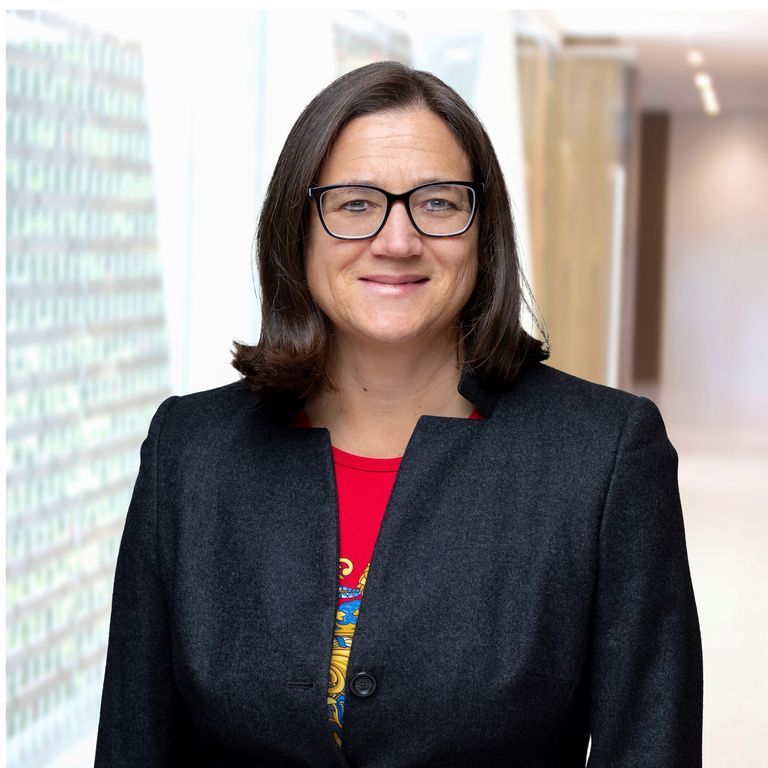Who will be paying for the impacts of on both distribution and transmission systems of widespread DER penetration, whether it is in the form of DER Aggregations under Order No. 2222, state-jurisdictional net energy metering (NEM), or stand-alone DERs (often PURPA facilities)? And, who will decide who bears such costs – FERC or state commissions? These are questions that need to be answered over the coming years. Likely, the answers to these questions will be inconsistent across the states and disputes regarding cost allocation as well as jurisdictional could occur. Although the cost allocation disputes over NEM have been increasing in number and intensity, they have remained largely within individual states. With DER Aggregations, non-NEM DER participations, and Reliability Standards involving invertor-based DERs, such disputes should involve more, and more complex, issues.
The fact FERC and the states share some jurisdiction over distribution service, as well as jurisdiction over DER programs varying based on the programs’ characteristics, both create a bit of a jurisdictional quagmire as to who determines how costs imposed on utility distribution companies (UDCs) and transmissin owners/providers will be allocated. Although some utilities are taking matters into their own hands, seeking to recover significant distribution system modernization costs in retail rate cases, how and whether DERs participating in FERC-jurisdictional programs, such as DER Aggregation or FERC-jurisdictional sales, will contribute to the recovery of costs that their market participation causes remains unclear. Similarly, whether and how IBR-DERs, and most DERs are IBR-DERs, will bear costs of transmission system impacts of their aggregate adoption is likewise murky.
FERC has been largely silent on who even has jurisdiction over the cost of analyzing the reliability impacts of DER Aggregations under Order No. 2222 on the distribution system of a UDC. Impacts of DER Aggregations on transmission systems may be rare, but raise similar questions. One of FERC’s most recent NOPRs, Invertor-Based DERs and Transmission System Reliability, implicates cost questions, but never answers them. For example, will all transmission customers, or all distribution customers, bear the costs of NERC compliance associated with IBR-DERs, or will it depend on who is incurring such costs – UDCs or transmission owner/providers?
This article explores a few of the areas where many answers surrounding cost and jurisdiction seem lacking.
Order No. 2222 and Distribution System Reliability Costs
In Order No. 2222, FERC shifted jurisdiction over all interconnection of DERs in Aggregations (other than those DERs who were interconnected under FERC jurisdiction and decided to stay that way) to the states. Thus, the interconnection of individual DERs would be subject to either existing, new, or modified UDC interconnection procedures, some of which procedures are state-regulated. A sampling of such state-regulated procedures, often first drafted in the context of PURPA implementation, indicate that it is typical to allow the utility to charge for needed studies and analysis, as well as interconnection costs, with some variation, depending on the nature and size of the DER and the DER’s business plans.
But, Order No. 2222 also permits “incremental” analysis of DERs that are aggregating. Under Order No. 2222, RTOs/ISOs must coordinate with UDCs to develop a distribution utility review process that includes criteria by which the UDCs would determine whether the participation of each proposed DER in an Aggregation will pose significant risks to the reliable and safe operation of the distribution system. Despite this mandate, FERC has now found in several Order No. 2222 compliance orders in which UDCs must develop such criteria for DER Aggregations, it is unclear who has jurisdiction over this “second” reliability analysis and the costs associated with applying it to DER Aggregations where the UDC is FERC-jurisdictional. (One of Order No. 2222’s very few mentions of how costs imposed by DER Aggregations should be allocated related to a finding that it may also be appropriate, on a case-by-case basis, for UDCs to assess a wholesale distribution charge on DER Aggregators and this process could be a FERC-jurisdictional vehicle for the analysis.) But, it remains somewhat unclear who has jurisdiction over the costs associated with DER Aggregation reliability analysis and any costs to upgrade distribution systems due to DER Aggregations.
Since DER Aggregation already was permissible in CAISO and NYISO prior to Order No. 2222, UDCs there might provide answers, but if any UDC DER Aggregation reliability review processes have been established by such utilities, they are not readily locatable. Most state commissions have not even started to consider the issue of studying or analyzing DER Aggregations, whether inside the state interconnection process context or in a broader context. A few states – Missouri, California, and Indiana – have opened rulemakings or passed laws that will examine Order No. 2222 potential impacts, but progress is slow. Indeed, some state commissions have remained focused on other DER issues. For example, in September 2021, the Massachusetts commission decided to not investigate investments driven primarily by future compliance with FERC Order 2222 in a proceeding involving UDC Grid Modernization Plans.
Here are just a few cost allocation/recovery issues that could arise:
- Does a FERC-jurisdictional UDC need FERC permission to collect fees for a FERC Aggregation reliability analysis, if the analysis is outside the state interconnection context?
- Who will bear the costs UDCs may incur to modernize or enhance their distribution grids to accommodate Order No. 2222, if Order No. 2222, as opposed to state NEM programs, is the cause of modernization need?
- If states allocate grid modernization costs to DER-owners selling at wholesale and DER Aggregators, how and who will perform such allocation?
One interesting note on this topic, the Kentucky PSC actually found recently in a NEM proceeding that participation in wholesale power markets by DERAs is likely to increase the cost to serve customer-generators and that NEM rules may need to discourage participation in DER Aggregations.
Order No. 2222 and RTO/ISO Transmission Reliability Costs
In Order No. 2222, FERC says very little about the DER Aggregation application process, other than the fact it would involve coordination with the relevant UDC and coordination with the retail regulatory authority (RRERA). The RTO/ISO was tasked with certain activities regarding reliability, although the issue of the impact of DER Aggregations on transmission system reliability was largely overlooked. FERC found that coordination between RTOs/ISOs and UDCs should ensure that RTOs/ISOs have the information that they need to study the impact of DER Aggregations on the transmission system. There were no specific processes mandated with regard to how or whether an RTO/ISO should study or review the impacts of a DER aggregation on its transmission system for reliability purposes.
The Order No. 2222 compliance filings generally include application processes and procedures, but with little focus on any ISO/RTO reliability analysis or payments for the same by a DER Aggregator (DERA). RTOs/ISO seemingly have imposed no fees associated with DERA registration (beyond existing registration fees for market participants), or explained what would happen if a UDC identified a transmission system reliability issue that would cause the need for an upgrade.
Perhaps DER Aggregations, in states where they do form, will rarely if ever cause transmission system costs, such that this question will rarely arise. But if an aggregation does have transmission cost implications, who should seek cost recovery and through which regulator, remains unclear, particularly if the impact is found by the UDC. It is possible that any transmission system cost impacts will be identified in the state-jurisdictional interconnection process, rendering the ISO/RTO an “Affected System.” State interconnection processes thus should address the need for Affected System upgrades on the interconnected transmission system.
Invertor-Based DERs and Transmission System Reliability Costs
FERC has issued a NOPR on gaps in NERC’s Reliability Standards relating to IBRs, which NOPR is focused, in part, on IBRs connected at the distribution level. FERC preliminarily found that the existing NERC Reliability Standards may not provide Bulk-Power System planners or operators with the tools necessary to plan because IBR-DERs, when acting in the aggregate, can have a material impact on the reliable operation of the Bulk-Power System. According to FERC, the Reliability Standards should ensure that validated planning and operational studies assess the reliability impacts on Bulk-Power System performance by IBR-DERs in the aggregate. FERC expresses concern in the NOPR about modeling, such as whether UDCs are communicating to planners and operators concerning IBR-DERs in the aggregate for modeling purposes, including settings, configurations, and ratings. FERC notes that the existing Reliability Standards do not require the provision of data that represents IBR-DERs in the aggregate, at a sufficient level of fidelity for planners and operators to accurately plan, operate, and analyze disturbances on the Bulk-Power System.
Proposed solutions impose new requirements on UDCs such as providing validated models of IBR-DERs in the aggregate to planning coordinators for interconnection-wide planning and operational models. Another proposal is to require UDCs that have IBR-DERs to provide to planning coordinators, transmission planners, reliability coordinators, transmission operators, and balancing authorities models accurately represent the dynamic performance of IBR-DER facilities in the aggregate, including momentary cessation and/or tripping, including all ride-through behavior (e.g., IBR-DERs in aggregate modeled by interconnection requirements performance to represent different steady-state and dynamic behavior).
What is missing from the NOPR is any discussion of costs, cost allocation, and jurisdiction. In fact, the words “cost” and “expense” are not mentioned at all. For example, what if the UDC is not affiliated with any Transmission Owner (e.g., Consumers Energy, DTE, etc.) and it is incurring costs under the new standards, is such a UDC allocating compliance costs only to distribution customers, largely under state jurisdictional rates? If the Transmission Owner in such a scenario is having to expend money to address an unaffiliated UDC’s IBR-DERs transmission-system impacts, it would seem FERC has jurisdiction over who pays those costs in the first instance – but, that does not answer the question of who should pay such costs. Another important question is what if NEM tariffs prevent allocation of costs to the very IBR-DERs owners causing the need to collect and model data; is it fair to require non-participating retail customers to bear such costs? Can IBR-DERs in NEM programs and other IBR-DERs be treated differently as to cost allocation? Questions abound.
The scope of IBR-DERs with which FERC is concerned also is not mentioned in the NOPR, which scope could have a significant impact on cost allocation. Most importantly, an IBR connected to the distribution system, i.e., an IBR-DER, could include behind-the-retail-meter (BTM) IBR-DERs, which has profound consequences for cost allocation, particularly where those customers with BTM IBR-DERs are largely NEM residential customers. If FERC adopts Reliability Standards that requires UDCs to expend millions of dollars to implement the NOPR and to address the existence of IBR-DERs, it is rather important to understand which IBR-DERs’ data must be aggregated, if a UDC and Transmission Owner are going to allocate costs on a causation basis, rather than simply roll in the costs of such expenses to all customers. For example, a cost-allocation line could be drawn between IBR-DERs that do and no not participate in wholesale markets. Such a cost allocation line would be appropriate if FERC is only asking for data in the NOPR on IBR-DERs that participate in wholesale markets. That said, such a set of data may be meaningless from a reliability standpoint if the overwhelming majority of impacts on the Bulk Power System are actually related to NEM customers with IBR-DERs. If IBR-DERs are selling under PURPA, that law presents another complex jurisdictional situation regarding to whom and by whom costs could be allocated. If FERC simply expects all customers that pay for distribution or transmission service to bear IBR-DER-related Reliability Standard compliance costs – which is a possibility – the link to cost causation is broken.
In sum, clarity does not exist at this time as to many interesting and complex questions involving various DER programs.



